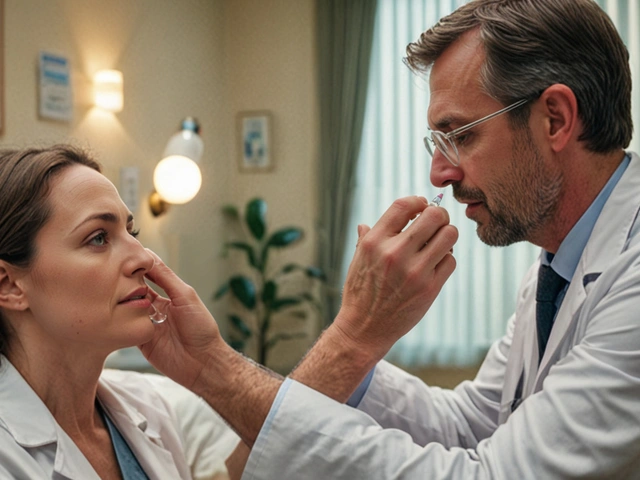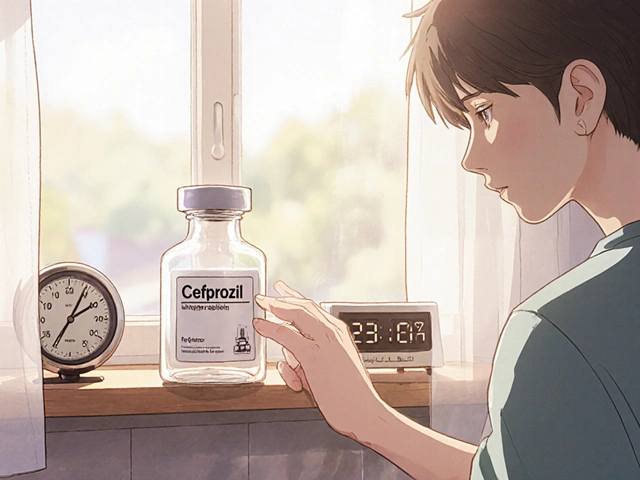Psoriasis Treatment Guide: What Works Best for You
If you’re tired of red, scaly patches ruining your day, you’re not alone. Psoriasis affects millions, but the good news is there are plenty of ways to keep it under control. Below you’ll find a quick rundown of the most common treatments and some everyday tricks that actually help.
Topical & Light Therapies
Most doctors start with creams, ointments, or shampoos that you can apply at home. Steroid lotions are cheap and work fast, but they’re not for long‑term use because the skin can get thin. Non‑steroid options like calcipotriene (a vitamin D analog) or tazarotene (a retinoid) are gentler and keep flare‑ups from coming back.
When creams aren’t enough, phototherapy steps in. This is a controlled exposure to UVB light that slows skin cell growth. Many clinics offer narrowband UVB sessions two to three times a week, and people often see improvement after 10–15 visits. The downside? You need regular appointments, and over‑exposure can raise skin cancer risk, so always follow the doctor’s schedule.
Systemic & Biologic Options
If your psoriasis covers large areas or affects joints (psoriatic arthritis), doctors may prescribe oral meds or injections. Methotrexate and cyclosporine are older drugs that suppress the immune system; they work well but require blood tests to watch for side effects.
Biologics are the newest class and target specific immune pathways. Drugs like adalimumab, secukinumab, and guselkumab are given by injection every few weeks and can clear up skin in months. They’re pricey, but insurance often covers part of the cost if you have severe disease.
Choosing between these options depends on how bad your psoriasis is, where it appears, and any other health issues you have. Talk to a dermatologist about a step‑by‑step plan – start simple, add stronger meds only when needed.
Beyond medication, daily habits make a big difference. Keep skin moisturized with fragrance‑free creams; dry skin triggers itching and new plaques. Avoid smoking and limit alcohol because they can worsen inflammation. A balanced diet rich in omega‑3 fatty acids (fish, walnuts) may also calm flare‑ups.
Stress is another hidden trigger. Even short bouts of anxiety can spark a patch. Try quick stress‑relief tricks like deep breathing, short walks, or a favorite hobby when you feel tension building.
Finally, track your symptoms. Write down where new patches appear, what foods you ate, and how stressed you felt. Over time the pattern becomes clear, letting you and your doctor fine‑tune treatment.
Psoriasis doesn’t have to rule your life. With the right mix of topicals, light therapy, systemic meds, or biologics, plus simple lifestyle tweaks, most people find relief within weeks. Start with a dermatologist visit, keep an eye on how your skin reacts, and adjust as you go – you’ll soon see the difference.
The Role of Calcipotriol in Treating Pustular Psoriasis
Hi, folks! Today we're going to talk about an exciting topic - Calcipotriol and its role in treating Pustular Psoriasis. This intriguing substance has shown promise in controlling symptoms and maintaining skin health. Moreover, we're going to delve into the nuances of Pustular Psoriasis, how it impacts our body and how Calcipotriol can aid in relief. Our goal is to shed light on the severity of this skin disease and elucidate how science is combating it. Gear up for a deep dive into skincare science!
About
Health and Wellness
Latest Posts


How to Choose Between Generic Medications for the Same Drug
By Orion Kingsworth Nov 23, 2025

Geodon (Ziprasidone) vs. Alternatives: A Detailed Comparison
By Orion Kingsworth Oct 17, 2025

Cefprozil Storage & Disposal Guide: Keep Antibiotics Safe
By Orion Kingsworth Oct 24, 2025

